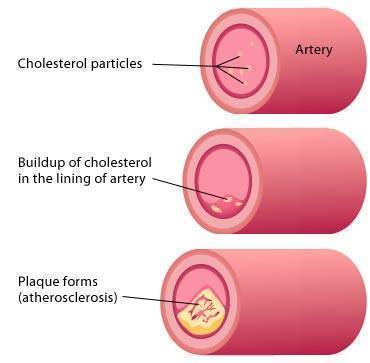
Hyperlipidemia is a medical condition in which a person has high levels of triglycerides and cholesterol in their blood. Although the condition can run in families, it is most often the result of lifestyle factors. People with hyperlipidemia typically have a diet rich in saturated fats, or they exercise too little. A combination of these factors can also cause high levels of triglycerides. In addition, people who are obese are at risk for developing hyperlipidemia.
The most common symptoms of hyperlipidemia include yellowish fatty nodules under the skin (called xanthomas) and fullness in the upper abdomen and spleen. These signs are primarily attributed to an enlargement of the liver and spleen, two organs that store cholesterol. Other symptoms may include abdominal pain and the appearance of an arcus senilis, which is a characteristic sign of a liver condition.
A variety of lifestyle and dietary changes can prevent and treat hyperlipidemia. In addition to avoiding tobacco and alcohol use, maintaining a healthy weight and exercising regularly are important. The goal is to create a heart-healthy diet that minimizes dietary cholesterol and saturated fat. The best approach is to limit the intake of processed foods and choose foods rich in fiber and fish. Some types of fats are healthy for your body, such as omega-3 fatty acids.
Another symptom of hyperlipidemia is a fatty nodule beneath the skin, called xanthomas. These lesions are most common around the eyes, knees, and elbows. Other symptoms of hyperlipidemia include the swelling of the liver and spleen, or arcus senilis. These are all symptoms of a metabolic disorder, and it is important to understand how to treat hyperlipidemia.
If your doctor suspects a metabolic disorder, you should consult a physician for a diagnosis. Symptoms of hyperlipidemia can be associated with a high-fat diet and a sedentary lifestyle. A doctor should be able to diagnose a fatty liver or other conditions. A person with a fatty liver should be aware of any of these factors. A healthy fatty-acid diet can lower cholesterol levels.

Symptoms of hyperlipidemia include yellowish fatty nodules under the skin, known as xanthomas. These lesions are typically found around the eyes, knees, and elbows. A person suffering from hyperlipidemia may experience pain in the upper abdomen or fullness in the abdomen. This condition can also lead to arcus senilis, an abnormally enlarged spleen.
There are many lifestyle factors that can contribute to high cholesterol levels. A person should avoid smoking and exercise regularly. A person should also follow a heart-healthy diet that minimizes saturated and trans fats in the body. They should avoid a diet high in refined sugar and high fat foods. In addition, people should avoid eating too many processed and high-carbohydrate foods. Those with high cholesterol should focus on getting more omega-3 fatty acids in their diet.
Symptoms of hyperlipidemia include yellowish fatty nodules under the skin. They are known as xanthomas. They are most commonly found on the knees, elbows, and upper abdomen. Enlargement of the spleen and liver can lead to arthritis symptoms and abdominal fullness. In addition, a person may develop arcus senilis, that is, an enlargement of the spleen.
Symptoms of hyperlipidemia may include yellowish fatty nodules under the skin. They are called xanthomas. They most commonly occur around the eyes and knees, but can occur anywhere on the body. Patients with hyperlipidemia may also have fatty nodules on the arms, hands, and neck. Their spleen can cause pain and a feeling of fullness in the upper abdomen. These are symptoms of a swollen spleen.
While the symptoms of hyperlipidemia are usually treatable, those who are not diagnosed may need medication. The goal of treatment is to prevent plaque formation, which can lead to a heart attack or stroke. Although people with hyperlipidemia may have many symptoms, they should consult their physician and obtain more information about treatment at the site cth.co.th to determine the correct treatment. To avoid these complications, it is important to maintain proper blood cholesterol levels. However, patients should be aware that there are many factors that can cause high cholesterol levels.